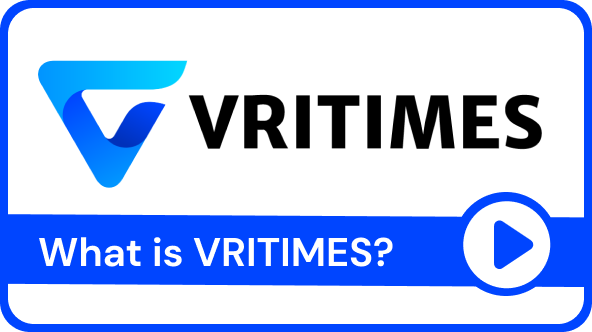/ Strategic Move to choose the right e-Invoicing software in Malaysia
Strategic Move to choose the right e-Invoicing software in Malaysia
As Malaysia moves toward mandatory e-invoicing, businesses must choose the right software to ensure compliance and enhance efficiency. This guide dives into the crucial aspects of e-Invoicing Software in Malaysia requirements, must-have software features, benefits, challenges, and key considerations for choosing the perfect solution.
e-Invoicing Software in Malaysia Requirements for Compliance
Malaysia’s e-invoicing mandate is rolling out in phases. Larger enterprises are required to comply first, eventually encompassing SMEs and smaller businesses. This phased approach gives businesses time to adapt but also highlights the importance of selecting the right e-invoicing software from the start.
Key requirements include:
LHDN Compliance: Software must align with Malaysia’s Inland Revenue Board (LHDN) standards.
Peppol Framework Compliance: Malaysia’s e-Invoicing system is based on Peppol standards, prioritizing secure, standardized, and interoperable electronic document exchanges.
Integration with Existing Business Systems: Ensuring the chosen software can integrate seamlessly with existing systems like SAP, Oracle, or Netsuite.
With the right e-Invoicing Software in Malaysia, businesses can efficiently meet compliance requirements while streamlining their invoicing processes.
Key Features to Look for in e-Invoicing Software in Malaysia
The best e-invoicing software isn’t just compliant and has features that enhance business operations and data security. Here’s what to prioritize:
Automated Invoice Generation and Validation: Automation minimizes human error, enhances data accuracy, and speeds up invoicing.
Customizable API Integration: A good solution offers API integration capabilities, allowing it to work seamlessly with ERP systems to avoid data duplication and manual entry.
Multi-Format Support and Customizable Templates: Flexible software should support various invoice formats and enable customization to fit different client needs.
Real-Time Data Access and Reporting: Access to real-time insights improves decision-making, enhances compliance tracking, and gives companies better control over cash flow.
Robust Security Measures: Cloud-based solutions should ensure data encryption, secure access controls, and compliance with data protection laws.
These features support compliance and streamline operations, making invoicing more accessible and efficient.
Benefits of Using e-Invoicing Software for Malaysian Businesses
The advantages of adopting e-invoicing software in Malaysia are clear. Here’s how a compliant solution can transform invoicing:
Enhanced Compliance and Reduced Risk of Penalties: Automated validation ensures invoices are error-free and compliant, reducing the risk of penalties from non-compliance.
Improved Cash Flow and Financial Visibility: Faster invoicing and better payment tracking improve cash flow and financial clarity.
Efficiency Gains: Automation reduces manual data entry, saving time and cutting down on repetitive tasks, allowing staff to focus on strategic activities.
Scalability as Business Grows: Scalable solutions allow businesses to handle increasing invoice volumes seamlessly, supporting growth without needing a new system.
Overcoming Common Challenges with e-Invoicing Software for
Implementing new software comes with challenges, and e-invoicing is no exception. Here’s how to manage some typical limitations:
Data Security Concerns: Ensure the software provider has robust security certifications, data encryption, and compliance with international data protection laws.
Integration with Current Systems: Look for software that offers API support and pre-built integrations to ease the transition and prevent data silos.
Setup and Training Requirements: Opt for a provider that offers comprehensive training and onboarding support to maximize software utilization from day one.
Choosing the Right e-Invoicing Software
With many options on the market, evaluating software can be overwhelming. Here’s a step-by-step approach:
Identify Key Needs: List essential features, including compliance requirements, integration capabilities, and scalability.
Test with Demos: Many providers offer free trials or demos. Test the software to ensure it meets your business needs and integrates with your existing systems.
Check Vendor Reputation: Research customer reviews, case studies, and support options to ensure the provider has a strong track record in Malaysia.
Assess Scalability and Future Needs: Choose a solution that can scale with your Business, supporting current operations and future growth.
With these criteria, businesses can narrow down options and select an e-invoicing software Malaysia solution that meets their compliance and operational needs.
Conclusion
GSTHero e-invoicing software for Malaysia is PEPPOL-compliant, providing businesses with a streamlined, secure solution for digital invoicing that meets local and international standards. By automating invoicing processes, it reduces manual errors, enhances data accuracy, and supports seamless interoperability across platforms. Built to fit into existing systems, this solution enables real-time invoicing and compliance without hassle, making it a practical choice for businesses seeking to stay ahead of regulatory requirements in a straightforward, efficient way.
FAQs on Choosing the Right e-Invoicing Software for Malaysia
What makes e-invoicing software compliant with Malaysia’s regulations?
Compliance with Malaysia’s e-invoicing standards requires the software to follow guidelines from the Inland Revenue Board (LHDN) and integrate Peppol framework standards for secure, interoperable invoicing.
Can e-invoicing software integrate with any ERP system?
\Most advanced e-invoicing solutions offer customizable API integrations that can connect with ERP systems like SAP, Oracle, and Netsuite. Always check integration capabilities with your provider to ensure compatibility with your existing systems.
How does Peppol compliance impact e-invoicing software selection?
Peppol compliance is critical as it ensures secure, standardized document exchange, enabling businesses to interact easily with international clients and partners. Choosing Peppol-compliant software simplifies compliance with Malaysian and international invoicing standards.
What are the top benefits of automation in e-invoicing?
Automation in e-invoicing reduces manual data entry, eliminates errors, ensures compliance, and speeds up invoice processing, all of which contribute to improved cash flow and operational efficiency.
How can I ensure the e-invoicing software I choose is future-ready?
Look for scalable solutions, offer regular compliance updates, and support new integrations, allowing your Business to adapt as invoicing regulations and business needs evolve.







